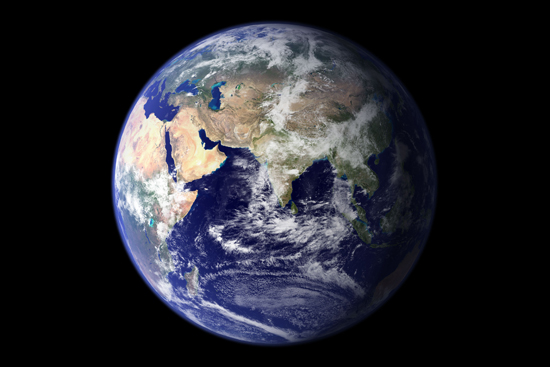LIMA, Peru — Imagine a looming global catastrophe caused by the spewing of polluting chemicals into the atmosphere.
Now imagine an international treaty approved unanimously in the United Nations that stops the problem dead in its tracks.
Clearly we’re not talking about climate change. But it did happen — when countries came together in the 1980s to tackle the threat from the shrinking ozone layer, the major environmental story of the day. The problem now appears to be on the mend thanks to the 1987 Montreal Protocol.
Despite similarities to the current campaign against climate change, however, differences of scale mean drawing useful lessons is difficult.
Acting as an invisible shield high in the stratosphere, the ozone layer makes life on Earth viable by filtering out the sun’s harmful ultraviolet rays.
It was seriously damaged by the widespread use of chlorofluorocarbons (CFCs) and other ozone-killing chemicals in refrigerators, aerosol cans and a range of other products.
Had it continued to deteriorate, skin cancer and eye cataract rates would probably have soared. Ecosystems would have been severely affected, starting with the reproductive systems of plankton, the vital base of the marine food chain.
Instead, a hole in the ozone layer that appears seasonally over Antarctica last year reached its second-smallest size in two decades.
At its largest in September, the hole covered around 8 million square miles — roughly the size of Canada, Mexico and the United States combined — according to NASA.
If that sounds like a lot, it’s worth remembering that size is down by roughly a third from the largest-ever recorded hole, which reached more than 11 million square miles in 2000.
But experts say the good news doesn’t mean the problem is over.
“The tendency indicates that the ozone layer is recovering,” said Guillermo Deferrari, who heads the ozone-monitoring unit of Argentina’s National Scientific and Technical Research Council. “But it’s going to take another 10 years before we can be sure.”
Deferrari is based in the world’s southern-most city, Ushuaia, in Argentina’s Tierra del Fuego. The ozone hole reaches there a few days during the southern spring every year.
During that time, the authorities call on residents to use sun-block and cover up from the dangerous ultraviolet radiation — which would seem strange at the equivalent northern latitude in Edmonton, Glasgow or Moscow.
“People don’t realize when they’re burning because of the low temperatures,” Deferrari says.
The bright side, if you can call it that, is that Tierra del Fuego’s windy, rainy weather means locals are usually well-wrapped anyway.
Despite the ozone campaign’s success, however, scientists are cautious about declaring the battle won partly because natural weather fluctuations affect the holes’ size each year.
The chemical interactions that destroy ozone take place more frequently at colder temperatures. They tend to occur when the vortex of air currents that swirl around the Antarctic and trap the coldest air aren’t disrupted by storms or other weather patterns.
That’s why there’s no hole in the ozone layer above the Arctic, despite the fact that ozone-damaging chemicals are sucked toward the stratosphere above both poles over a period of about 10 years after their emission.
Unlike the relatively symmetrical Antarctic, the Arctic presents a much messier geography of ice, open sea and land.
“It’s like a draining bath with a baby in it, splashing around and disrupting the vortex,” says Berkeley chemistry and earth science professor Kristie Boering. “In the Antarctic, there is no baby, the vortex forms more perfectly and the temperatures drop further.”
Although their causes are unrelated, the ozone hole and climate change are connected in at least one way, she says.
“Global warming is a misnomer because although the surface of the Earth may be becoming hotter, that’s because less heat is trapped in the stratosphere,” she said. “The stratosphere is actually cooler and that makes it harder for the ozone layer to recover.”
Boering estimates the ozone layer may not fully regenerate until around 2070 as a result. That’s some 20 years later than without the effects of climate change.
Nevertheless, as environmental activists quietly celebrate successful action over the ozone layer, some question whether lessons can be learned for the intractable battle over climate change.
One fundamental difference is that replacing the chemicals that damage the ozone layer is relatively cheap and easy.
“It was a simpler problem,” Boering says. “But the scientists have been right both times. What they predicted has come to pass.”
Tackling climate change also means taking on some of the same opponents among industry lobbyists and others who opposed action over the ozone layer, she adds.
“The same people who testified before Congress then that fixing this problem [of ozone depletion] would lead to economic disaster — which didn’t happen — are now testifying against solving climate change.”
Whether or not they feel any contrition about their failure, the bad news for climate change activists is that they’re not showing it.


